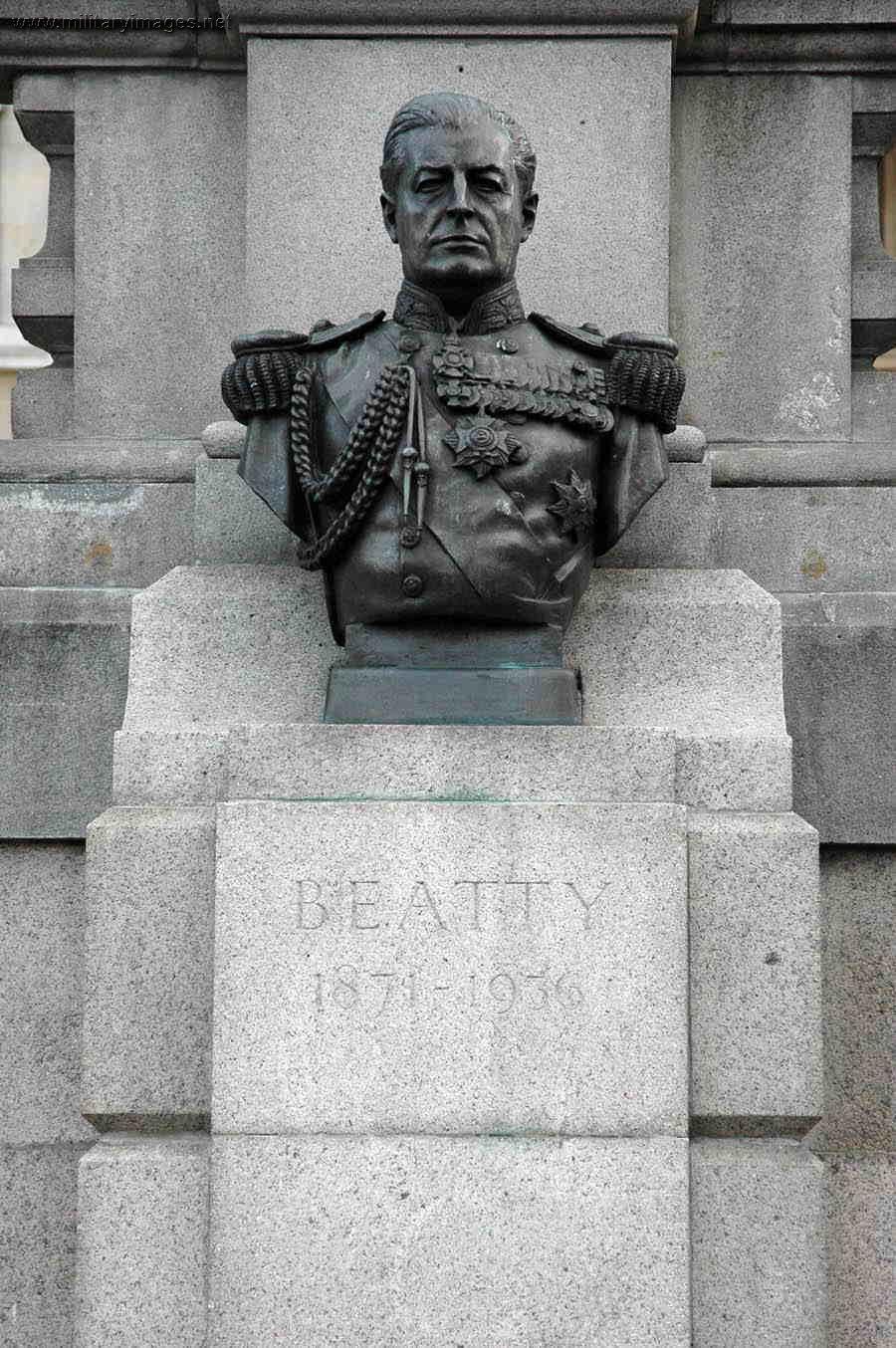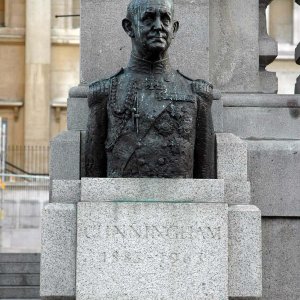- Extended Description
- The youngest British admiral since Horatio Nelson, David Beatty was a charismatic and courageous leader who fought in most major engagements during the First World War. Commander-in-Chief of the Grand Fleet from 1916-1919 and First Sea Lord for an unprecedented period between 1919-1927, Beatty was one of the most influential figures in the Royal Navy in the early decades of the twentieth century.
He joined the Navy at Gosport aged 13 in January 1884 and was assigned to HMS Alexandra, Mediterranean Fleet flagship. Promoted to Lieutenant in 1892, Beatty served in the corvette Ruby and battleships Camperdown and Trafalgar. Up to this point, there was nothing that marked out Beatty from his contemporaries.
This all changed during General Kitcheners invasion of the Sudan in late 1890s. Supporting Kitcheners army was a flotilla of gunboats under Commander Cecil Colville, whom Beatty met on the Alexandra. Colville was wounded and Beatty, as the senior Lieutenant, took command. For his actions in a series of engagements culminating in the Battle of Omdurman, Beatty was Mentioned in Despatches and awarded the DSO. One evening, in an outrageous piece of good fortune, Beatty greeted a junior officer of the 21st Lancers on the banks of the Nile to get an update on the situation. During the conversation Beatty threw a bottle of champagne from the gunboat to the shore where it was picked up by the grateful officer. The officer was none other than Winston Churchill who as First Lord of the Admiralty would play a pivotal role in Beattys career.
Over the next few years Beattys rise was meteoric. He was promoted to Commander aged 27 in 1898, serving only half the usual term as a Lieutenant. As Executive Officer of the battleship Barfleur on the China Station, Beatty was wounded in the capture of Tientsin in June 1900 during the Boxer Rebellion. Ordered home he was made Captain at only 29.
In 1901 Beatty married American millionaire heiress Ethel Tree. His wealth allowed him an independence from the navy that most of his fellow officers lacked. As a member of high society, Beatty and his wife had houses in London, Leicestershire, Scotland and on a few occasions even dined with the King.
Further appointments included Naval Advisor to the Army Council and Captain of the battleship Queen until he was promoted to Rear Admiral on 1 January 1910. At 39, the same age as Nelson and Admiral Rodney, he was the youngest Admiral since the eighteenth century.
The next episode almost ended his career. Offered the post of second-in-command of the Atlantic Fleet, Beatty refused. Possibly over confident after previous success, he argued the command had no prospects and asked for one in the Home Fleet. Unsurprisingly the Admiralty was extremely unimpressed and placed him on half pay without a command, where he remained for nearly two years. But Beattys luck held. Winston Churchill became First Lord of the Admiralty in 1911 and finding him unemployed, appointed Beatty to the important post of Naval Secretary.
Another major promotion followed in 1913 when he was given command of the prestigious Battle Cruiser Squadron over the heads of several senior officers. The most dashing element of the Home Fleet, it was in entirely keeping with Beattys personality, epitomised by his stance with his cap worn at a jaunty angle. In this post Beatty made his reputation as a daring commander, often in controversial circumstances.
A confused engagement in the Heligoland Bight on 28 August 1914 was swiftly resolved when Beatty arrived with his battlecruisers sinking three German cruisers and a destroyer. At Dogger Bank in January 1915, Beatty was furious when confused signalling allowed the most of the German battlecruisers to escape, only the elderly Blucher being sunk. At the Battle of Jutland in 1916 two of his battlecruisers, Queen Mary and Indefatigable, exploded causing Beatty to famously remark There seems to be something wrong with our bloody ships today. He was dogged by controversy over Jutland after the war when he attempted to get the official record changed to place the actions of the Battle Cruiser Fleet in a more favourable light.
On succeeding Admiral Jellicoe as Commander-in-Chief of the Grand Fleet at the end of 1916, Beatty issued a new set of battle instructions emphasising use of initiative and pursuit of the enemy. He played a major role in maintaining the morale of the fleet during a long period of inactivity. Beattys finest hour came at the surrender of the High Seas Fleet on 21 November 1918, when he signalled The German Flag will be hauled down at sunset today Thursday, and will not be hoisted again without permission. On 3 April 1919 he became the youngest officer to hold the rank of Admiral of the Fleet at the age of 48.
As First Sea Lord, Beatty opposed the cuts in naval strength. He used his high profile and popularity to press the navys case in government with some success. Convinced the Navy was the first line of Imperial defence, he stressed the need for a strong battlefleet and advocated the construction of a base at Singapore to meet the Japanese threat. He struggled unsuccessfully to regain control of the Fleet Air Arm. On his death in 1936 Beatty was buried in St Pauls cathedral close to Nelsons crypt.
Picture taken 19-07-05 during a business trip to London. This memorial lies in Trafalgar Square.
- Copyright/usage Info
- COPYRIGHT @ MilitaryImages.Net















